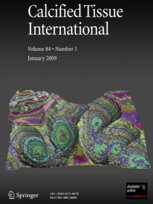Prevalence of Osteosarcopenia and Its Association with Cardiovascular Risk Factors in Iranian Older People: Bushehr Elderly Health (BEH) Program
Authors
Affiliations
Abstract
Osteosarcopenia is an increasingly recognized geriatric syndrome with a considerable prevalence which increases morbidity and mortality. Although osteosarcopenia is a result of age-related deterioration in muscle and bone, there are many risk factors that provoking osteosarcopenia. These risk factors should be considered by the clinicians to treat osteosarcopenia. We assessed the link between osteosarcopenia and conventional risk factors of cardiovascular diseases. This study was a cross-sectional study that has been conducted within the framework of Bushehr Elderly Health (BEH) program stage II in which participants aged ≥ 60 years were included. Osteopenia/osteoporosis was defined as a t-score ≤ – 1.0 standard deviation below the mean values of a young healthy adult. We defined sarcopenia as reduced skeletal muscle mass plus low muscle strength and/or low physical performance. Osteosarcopenia was considered as the presence of both osteopenia/osteoporosis and sarcopenia. We estimated the age-standardized prevalence of osteosarcopenia for men and women, separately. Using modified Poisson regression analysis, adjusted prevalence ratio (PR) with 95% CI was used to show the measure of associations in the final model. Among 2353 participants, 1205 (51.2%) were women. Age-standardized prevalence of osteosarcopenia was 33.8 (95% CI 31.0-36.5) in men and 33.9 (30.9-36.8) in women. In both sexes, the inverse association was detected with body mass index and having osteosarcopenia (PR 0.84, 95% CI 0.81-0.88 in men and 0.77, 95% CI 0.74-0.80 in women). In both sexes, high-fat mass was positively associated with osteosarcopenia [PR 1.46 (95% CI 1.11-1.92) in men, and 2.25 (95% CI 1.71-2.95) in women]. Physical activity had a significant inverse association in men (PR = 0.64, 95% CI 0.46, 0.88), but not in women. Diabetes was also showed a direct association with osteosarcopenia in men (PR 1.33, 95% CI 1.04-1.69). No associations were detected between the lipid profiles and osteosarcopenia. Results demonstrated a high prevalence of osteosarcopenia in both sexes suggesting a high disease burden in a rapidly aging country. Lifestyle and socioeconomic factors, as well as chronic diseases, were significantly associated with osteosarcopenia.
Keywords: Elderly; Iran; Osteoporosis; Osteosarcopenia; Prevalence; Sarcopenia.

